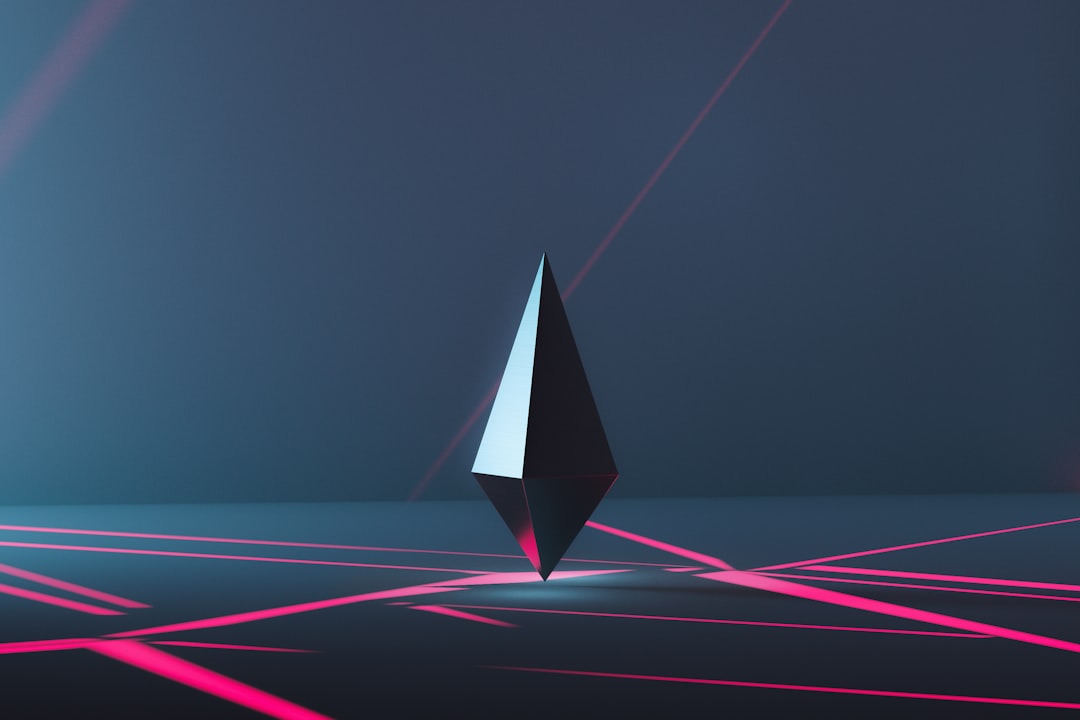Crypto Art is a new and exciting trend that is taking the art world by storm. It is a form of digital art that is created and sold using blockchain technology, which is the same technology that powers cryptocurrencies like Bitcoin. This means that each piece of crypto art is unique, digital, and can be owned and traced back to its original creator.
But why is Crypto Art gaining popularity, and why should you care? Well, for starters, Crypto Art represents a new frontier in the art world, bringing together technology, creativity, and innovation in a way that has never been seen before. It is challenging traditional notions of what art is, who gets to create it, and how it is bought and sold.
Another reason why Crypto Art is gaining popularity is that it provides a way for artists to monetize their work in a way that is fair and transparent. With traditional art sales, there are often hidden fees and commissions that can eat away at an artist’s profits. But with Crypto Art, everything is recorded on the blockchain, and transactions are secure and transparent.
Finally, Crypto Art is gaining popularity because it represents a new way of thinking about ownership and authenticity. Each piece of Crypto Art is unique, and its ownership can be easily traced back to its original creator. This means that buyers can be sure that they are getting the real thing, and artists can be sure that they are getting credit for their work.
Overall, Crypto Art is an exciting new trend that is capturing the imagination of artists, collectors, and art lovers around the world. If you haven’t already, it’s time to get on board and see what all the fuss is about!
The Unique Characteristics of Crypto Art
Crypto art is a new and exciting form of art that is gaining popularity in the art world. It is unique in several ways, including digital ownership, authenticity, and traceability.
Digital ownership is one of the most significant characteristics of crypto art. Unlike traditional art, which can be easily copied or duplicated, crypto art is created and stored entirely digitally, making it impossible to replicate. This digital ownership is crucial to the value of crypto art, as it ensures that each piece is unique and cannot be copied or reproduced.
Authenticity is another critical characteristic of crypto art. Each piece of crypto art is verified through a digital signature, ensuring that it is an original work of art. This verification process gives collectors and buyers confidence in the authenticity of the artwork and helps to prevent fraud.
Traceability is also an essential characteristic of crypto art. Each piece of crypto art is recorded on a blockchain, which is a decentralized and secure ledger that tracks all transactions. This traceability ensures that each piece of art can be traced back to its original creator, allowing artists to retain control over their work and preventing unauthorized reproductions.
Overall, the unique characteristics of crypto art make it an exciting and innovative form of art that is challenging traditional notions of ownership and authenticity. As the art world continues to evolve, it will be exciting to see how crypto art continues to impact the industry and push boundaries in new and exciting ways.
Digital ownership is one of the most significant characteristics of crypto art.
NFTs and their Impact on the Art World: Selling for Millions, Creating New Opportunities for Artists
When we talk about crypto art, one cannot neglect the impact of NFTs on the art industry. NFTs or non-fungible tokens are unique digital assets that represent ownership of a particular piece of art. These tokens use blockchain technology to ensure authenticity and traceability of the artwork they represent.
And the impact has been nothing short of revolutionary. In recent months, we have seen NFTs sell for millions of dollars, making headlines and capturing the attention of the world. The infamous Beeple artwork, “Everydays: The First 5000 Days,” sold for a whopping $69 million at Christie’s auction house, making it the third-highest selling artwork by a living artist.
But NFTs are not just benefiting the art world’s big players; they are also creating new opportunities for emerging artists. With NFTs, artists can bypass traditional gatekeepers and sell their work directly to collectors, without compromising on their artistic vision. This has led to a surge of new artists and creators entering the market, and the diversity of the crypto art world is growing rapidly.
Moreover, NFTs are enabling artists to earn royalties on their work, even after it has been sold. This is a game-changer for artists who, in the traditional art world, typically only earn money from the initial sale of their work. With NFTs, artists can earn a percentage of future resales, ensuring that they are compensated for the true value of their work.
Of course, NFTs are not without their criticisms and challenges. There are concerns about the environmental impact of the energy-intensive blockchain technology that powers them, and there have been instances of fraud and unethical practices in the crypto art market. But as with any new technology, these issues can and will be addressed as the industry continues to evolve.
The impact of NFTs on the art world has been transformative, creating new opportunities for artists and collectors alike. It is an exciting time to be alive and witnessing the birth of a new era in art history. As we move forward, we must continue to ask questions, challenge the status quo, and embrace the potential of crypto art to reshape the art world for the better.
In recent months, we have seen NFTs sell for millions of dollars, making headlines and capturing the attention of the world.
The Role of Blockchain Technology in Crypto Art
Blockchain technology is at the heart of the crypto art movement. It has been instrumental in creating a decentralized and secure system that enables artists to sell their digital creations directly to collectors, without the need for intermediaries such as galleries or auction houses.
With blockchain technology, artists can create unique tokens, known as non-fungible tokens (NFTs), that represent ownership of their digital creations. These NFTs are stored on a distributed ledger, which allows for the authenticity and traceability of each piece of art.
One of the key benefits of blockchain technology in the world of crypto art is its ability to create a secure and transparent system that protects artists and collectors from fraud. Since all transactions are recorded on a public ledger, there is no room for tampering or unauthorized changes. This means that artists receive payment for their work and collectors receive a piece of digital art that is verified as authentic.
Furthermore, blockchain technology has also allowed for the creation of smart contracts, which automatically execute transactions when certain conditions are met. This has streamlined the buying and selling process, making it more efficient and cost-effective for both artists and collectors.
The use of blockchain technology in crypto art has opened up new opportunities for artists, particularly those who may have previously been excluded from the traditional art world. It has enabled them to gain recognition and sell their work to a global audience, without needing to go through the gatekeepers of the art market.
In addition, blockchain technology has also allowed for greater transparency in the art world, giving collectors a clearer understanding of the provenance and history of each piece of art they purchase. This has the potential to increase trust and confidence in the market, which could lead to even greater growth and expansion of the crypto art movement.
Of course, there are also criticisms and challenges facing crypto art and blockchain technology. Concerns have been raised about the environmental impact of the energy-intensive mining process required for blockchain transactions, as well as the potential for fraudulent activity within the market.
Overall, however, the role of blockchain technology in the world of crypto art cannot be understated. It has created a decentralized and secure system that has the potential to reshape the art world, by challenging traditional gatekeepers and enabling more artists to gain recognition and success.
The use of blockchain technology in crypto art has opened up new opportunities for artists, particularly those who may have previously been excluded from the traditional art world.
The Democratization of the Art World: How Crypto Art is Challenging Traditional Gatekeepers and Enabling More Artists to Gain Recognition
The art world has long been known for its exclusivity, with gatekeepers determining which artists get recognition and which ones are left in the shadows. However, with the rise of crypto art, this is starting to change.
One of the most exciting aspects of crypto art is the way it democratizes the art world. It allows artists from all over the world to share their work with a global audience, without having to go through traditional gatekeepers like gallery owners and curators. This means that talented artists who may have been overlooked in the past now have the opportunity to gain recognition and build a following.
In addition, crypto art has the potential to challenge the dominance of the art market by big players and institutions. With blockchain technology providing a secure and decentralized system for buying and selling art, collectors can now purchase works directly from artists, without having to go through intermediaries. This not only benefits artists, but it also gives collectors more control over their collections and removes the need for costly intermediaries, creating a more efficient system.
Another way that crypto art is democratizing the art world is by creating new revenue streams for artists. With NFTs selling for millions of dollars, artists are able to make a living off of their work in ways that were previously impossible. This opens up new opportunities for artists to pursue their passion and make a living doing what they love.
Of course, there are still challenges that need to be addressed. Some critics have raised concerns about the environmental impact of crypto art, as the energy required for blockchain transactions can be significant. There are also concerns about the potential for fraud, as the relative anonymity of blockchain transactions can make it difficult to verify the authenticity of works.
Despite these challenges, the rise of crypto art represents a major shift in the art world. By enabling more artists to gain recognition and challenging traditional gatekeepers, it has the potential to reshape the art world in ways that we are only beginning to imagine. As we look to the future, it will be exciting to see how this new form of art continues to evolve and grow.
Of course, there are still challenges that need to be addressed.
Criticisms and Challenges Facing Crypto Art
As with any emerging technology or industry, there are bound to be criticisms and challenges facing crypto art. One of the most pressing concerns is the potential environmental impact of blockchain technology, which is used to verify and secure the ownership and authenticity of crypto art. The energy consumption required for blockchain transactions is significant, and some have raised concerns about the carbon emissions generated by the process.
Another challenge is the potential for fraud and scams within the crypto art market. Because of the decentralized nature of blockchain technology, there is no centralized authority or regulatory body overseeing transactions, which means that fraudulent activity can potentially go unchecked. There have already been reports of fake NFTs circulating online, which underscores the need for better security measures and greater transparency within the crypto art market.
Despite these challenges, there is reason to believe that crypto art has the potential to overcome these obstacles and continue to grow and evolve. As more artists and collectors embrace the technology and as blockchain continues to mature, it is likely that new solutions will emerge to address these concerns.
Ultimately, the success of crypto art will depend on the willingness of the art world and the larger society to embrace this new form of artistic expression. By challenging traditional gatekeepers and enabling greater access and recognition for artists, crypto art has the potential to reshape the art world in exciting and innovative ways. It is up to us to embrace this potential and work together to overcome the challenges and realize the full promise of crypto art.
One of the most pressing concerns is the potential environmental impact of blockchain technology, which is used to verify and secure the ownership and authenticity of crypto art.
The Future of Crypto Art and its Potential to Reshape the Art World
As we come to the end of this discussion on crypto art, it’s evident that the potential for its impact on the art world is boundless. The unique characteristics of digital ownership, authenticity, and traceability of crypto art are revolutionizing the way we perceive and collect art. The rise of NFTs has created new opportunities for artists, allowing them to sell their work directly to collectors and earn a fair share of the profits.
Blockchain technology has been instrumental in creating a decentralized and secure system for artists and collectors, removing the need for intermediaries and gatekeepers. The democratization of the art world is challenging traditional norms and making it possible for more artists to gain recognition regardless of their background or connections.
However, with the rise of any new technology comes criticism and challenges, and crypto art has not been spared. Concerns have been raised about the environmental impact of blockchain technology and the potential for fraud in the market. These are valid concerns that need to be addressed by the crypto art community as we strive towards a more sustainable and transparent ecosystem.
Despite the challenges, the future of crypto art is bright. As more artists and collectors embrace this new form of art, we can expect to see a shift in the traditional art market. The potential for new markets, new forms of art, and new ways of collecting and experiencing art is enormous.
In conclusion, the impact of crypto art on the art world is still unfolding, and we are witnessing a movement that has the potential to reshape the industry as we know it. The possibilities are endless, and it’s exciting to be part of this new era in art. Let’s embrace the future with open minds, curiosity, and a willingness to experiment with new forms of expression.





